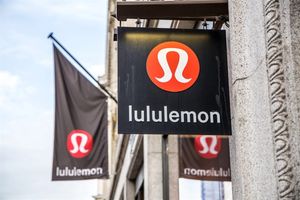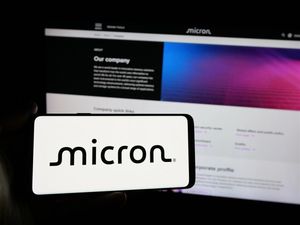
Marine transportation service company Kirby (NYSE: KEX) fell short of the market’s revenue expectations in Q1 CY2025, with sales falling 2.8% year on year to $785.7 million. Its non-GAAP profit of $1.33 per share was 3.7% above analysts’ consensus estimates.
Is now the time to buy KEX? Find out in our full research report (it’s free).
Kirby (KEX) Q1 CY2025 Highlights:
- Revenue: $785.7 million vs analyst estimates of $807.1 million (2.8% year-on-year decline, 2.7% miss)
- Adjusted EPS: $1.33 vs analyst estimates of $1.28 (3.7% beat)
- Adjusted EBITDA: $170.9 million vs analyst estimates of $167.4 million (21.8% margin, 2.1% beat)
- Operating Margin: 13.4%, in line with the same quarter last year
- Free Cash Flow was -$42.2 million, down from $42.3 million in the same quarter last year
- Market Capitalization: $6.11 billion
StockStory’s Take
Kirby’s first quarter results were shaped by both positive and negative factors in its core businesses. On the marine transportation side, CEO David Grzebinski highlighted that improved customer demand and high barge utilization supported increased pricing, but these gains were offset by challenging weather and navigational delays. In distribution and services, the company faced mixed demand, with power generation and commercial marine repairs performing well, while supply chain delays and persistent softness in the oil and gas sector weighed on overall results.
Looking ahead, management maintained a constructive outlook for 2025, citing strong market conditions in marine transportation and a robust backlog in power generation. Grzebinski cautioned, however, that macroeconomic uncertainties—such as potential tariff impacts and supply constraints—could introduce variability as the year progresses. Despite these risks, the company expects improved margins and revenue growth in both the inland and coastal marine segments as weather normalizes and shipyard activity winds down.
Key Insights from Management’s Remarks
Kirby’s management provided further context on business trends impacting the first quarter’s performance, with particular attention to operational and industry-specific dynamics.
- Marine Transportation Weather Impacts: The inland marine business faced a 50% increase in weather-related delay days compared to last quarter, affecting transit times and contract profitability. Despite this, barge utilization remained strong at 95%-96%.
- Pricing and Utilization Improvements: Demand for inland and coastal barge services stayed high. Spot and term contract pricing increased, with spot rates up in the high single digits year-over-year, and term contracts renewing at mid-single digit gains. Coastal contract renewals saw even larger increases, aided by vessel scarcity.
- Distribution and Services Supply Challenges: Power generation revenues fell due to supply delays, though the backlog grew as orders from data centers and industrial clients remained strong. The oil and gas segment continued to face weak demand, but cost management and growth in electric fracturing (e-frac) equipment supported margin expansion.
- Acquisition and Capital Allocation: Kirby completed a 14-barge fleet acquisition and continued share repurchases. Management described the acquisition environment as “more constructive” than in recent years and signaled continued interest in consolidating marine assets.
- Industry Trends and Regulatory Factors: Rising steel prices—partly linked to tariffs—are keeping new barge construction limited, supporting favorable supply-demand dynamics. Management noted that most new barge orders are for replacement rather than expansion, and that labor shortages and financing constraints are further limiting industry capacity growth.
Drivers of Future Performance
Kirby’s management expects favorable industry fundamentals to continue supporting growth in marine transportation, while supply chain issues and customer discipline will shape distribution and services performance.
- Limited Barge Supply: Management believes that constrained new barge construction, coupled with ongoing high utilization rates, will support pricing and margin expansion in the inland and coastal marine businesses.
- Backlog in Power Generation: A strong backlog of orders from data centers and industrial customers is expected to drive growth in the power generation segment, though timing of deliveries remains uncertain due to OEM supply delays.
- Macroeconomic Uncertainties: The company cited risks from tariffs, steel prices, and potential shifts in trade flows. Management acknowledged that these factors could impact customer demand and input costs, but currently views their net effect as modestly positive for Kirby’s core U.S.-focused operations.
Top Analyst Questions
- Jonathan Chappell (Evercore ISI): Asked about Kirby’s acquisition strategy and whether the market is more favorable for consolidating deals. CEO David Grzebinski confirmed the environment is more constructive and that acquisitions remain a priority.
- Daniel Imbro (Stephens): Queried on inland barge utilization and pricing trends exiting Q1 and expectations for margin progression. Management reported utilization near capacity and indicated that margins should improve through the year as weather normalizes.
- Scott Group (Wolfe Research): Inquired about contract pricing dynamics and the influence of tariffs and trade policy. Management explained that most contract renewals occur in Q4, and that steel tariffs are currently driving up new barge costs, which benefits Kirby by limiting industry supply.
- Ken Hoexter (Bank of America): Sought clarification on reaffirmation of EPS growth targets and the relationship between weather-driven capacity constraints and future pricing. Management reaffirmed guidance and explained that better weather will free up capacity, supporting both margins and pricing.
- Greg Wasikowski (Webber Research): Asked about the nature of new barge orders and industry capacity. Management clarified that most new builds are for replacement purposes and that labor shortages and financing challenges limit fleet expansion.
Catalysts in Upcoming Quarters
Looking ahead, the StockStory team will be tracking (1) the pace at which inland and coastal marine margins improve as weather-related delays subside, (2) the resolution of supply chain challenges and the conversion of power generation backlog into revenue, and (3) Kirby’s ability to execute additional acquisitions or opportunistic fleet expansions. Developments in tariffs, steel pricing, and labor availability will also be monitored as key industry variables.
Kirby currently trades at a forward P/E ratio of 16×. Should you double down or take your chips? The answer lies in our free research report.
The Best Stocks for High-Quality Investors
Donald Trump’s victory in the 2024 U.S. Presidential Election sent major indices to all-time highs, but stocks have retraced as investors debate the health of the economy and the potential impact of tariffs.
While this leaves much uncertainty around 2025, a few companies are poised for long-term gains regardless of the political or macroeconomic climate, like our Top 5 Strong Momentum Stocks for this week. This is a curated list of our High Quality stocks that have generated a market-beating return of 176% over the last five years.
Stocks that made our list in 2020 include now familiar names such as Nvidia (+1,545% between March 2020 and March 2025) as well as under-the-radar businesses like the once-micro-cap company Tecnoglass (+1,754% five-year return). Find your next big winner with StockStory today.





